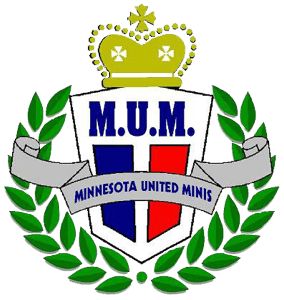I look at all the Classic Mini Cooper vehicles and they call them different names. The names don’t match the current MINI Cooper cars, why not? There are some different variations of Minis, what is up with them?
The information below concerns the original or classic Mini Cooper. BMW purchased British Rover Group in 1994 and released the MINI Cooper in 2001. Besides the dates, the classic cars are referred to as Mini (lower case) and the BMW cars are referred to as MINI (upper case). This page provides some history about the original Mini. For information on the new MINI and various models, see this information.
The Mini came about mostly due to a fuel shortage due to the 1956 Suez Crisis. There were very few small, fuel efficient cars around in England at the time. Alec Issigonis who worked for the British Motor Corporation Limited (BMC) was given the challenge to produce a competitor to the “bubble cars” that existed at the time. The Mark I Mini was first shown on April 1959 and announced to the public on August 26, 1959.
Some confusion exists when viewing a Mini is that for many years they were sold under both the BMC brands of Austin and Morris. More confusion exists because some had the same model designation under each brand. The Morris version was known as “the Mini” or the “Morris Mini-Minor”. The Austin was sold as the Seven sometimes written as SE7EN in early publicity material – with the ‘7’ using the letter V rotated anti-clockwise so it approximated the number 7.
Over the course of the decades, Minis where manufactured and sold all over the world. However, the original plant was in England and the current BMW MINI continues to be manufactured in England.
While the BMW MINI presently has Generation 1, 2 and 3 versions of the car, many consider the Mini by BMC to be the original Generation 1.
The information below covers the various models of the classic Mini:
Mark I Mini: 1959 to 1967
- Various names are Austin 850, Austin Mini, Austin Partner, Austin Seven, Innocenti Mini (Italy), Morris 850, Morris Mini, Riley Elf, Wolseley Hornet
- Manufactured in United Kingdom and Australia
- Available engines were 850 cc, 998 cc, 1,071 cc and 1,275 cc
Morris Mini Traveller and Austin Mini Countryman: 1960 to 1969
- Two door estate cars with double “barn”-style rear doors
- Built on a slightly longer chassis of 84 inches
- A decorative ash wood trim was on the rear body which gave the vehicle the term “Woodie”
- Approximately 108,000 Austin Mini Countrymans and 99,000 Morris Mini Travellers were built.
- Also built in Italy and Portugal
Mini Van: 1960 1983
- Commercial panel van rated at ¼-ton load capacity
- Similar to the Traveller and Countryman above but with no rear side windows
- In 1978 it was renamed the Mini 95
- 521,494 were built
Wolseley Hornet and Riley Elf: 1961 to 1969
- More luxurious versions of the Mini
- Slightly finned rear wings
- Larger boots (trunk)
- The front-end featured each marque’s traditional upright grille design
- Larger diameter chrome hubcaps
- Additional chrome accents
- Bumper overrides
- Wood-veneer dashboards
- Some years featured leather seats
- Started with a 848 cc (34 bhp) engine with a single HS2 carburetor and changed to a single HS2 carburetor 38 bhp version of the Cooper’s 998 cc.
Mini Pick-up: 1961 to 1983
- Built on the longer Mini Van platform with an open-top rear cargo area and a tailgate
- In 1978 it was renamed the Mini 95
- 58,179 were made
Mini Moke: 1964 to 1989
- Built for the British Army with a twin engine 4-wheel-drive
- The vehicle didn’t have enough clearance for use by the military
- Produced in England, Australia and Portugal
- 50,000 were made
Mark II Mini: 1967 to 1970
- Various names are Morris Mini and Austin Mini
- Design features are a redesigned grille, larger rear window and numerous cosmetic changes
- Manufactured in England, Belgium, Chile, New Zealand, Portugal, South Africa, Spain, Yugoslavia and Malaysia
- Available engines were 848 cc, 998 cc and 1,275 cc
- A total of 429,000 Mk II Minis were produced.
Mini Clubman and 1275 GT: 1969 to 1980
- The vehicle can in two body styles:
- 2-door saloon
- 2-door estate
- Manufactured in England, Portugal, and New Zealand
- The Mini Clubman was intended to replace the upmarket Riley and Wolseley versions
- The Clubman Estate replaced the Countryman and Traveller
- Available engines were 998 cc , 1,098 cc and 1,275 cc
- Production was 275,583 Clubman Saloons, 197,606 Clubman Estates and 110,673 1275 GTs
Mark III: 1969 to 1976
- The vehicle came in three body styles:
- 2-door Saloon
- 2-door Pick-up
- 2-door Van
- Manufactured in England, Belgium, New Zealand, Portugal, South Africa and Spain
- Design features in included larger doors with concealed hinges, sliding windows being replaced with winding windows
- Available engines were 848 cc, 998 cc and 1,275 cc
- The name Mini completely replaced the separate Austin and Morris brands
Mark IV: 1976 to 2000
- The vehicle came in three body styles:
- 2-door Saloon
- 2-door Van
- 2-door Truck
- Manufactured in England, Australia, Belgium, New Zealand, Portugal, South Africa and Spain
- Available engines were 998 cc, 1,098 cc and 1,275 cc

The clubman Estate had 3 generations too.
From 1969 to 1975 is mk1. It is characterized by fake wood trim/stripe and a single vertical badge on the grill.
Mk2 Clubman Estates (1975 -1980) only had a sticker stripe and a black accented “+” grill
Mk3 Clubman Estates (1981-1982) we’re official called HL1000 estates but we’re almost identical to mk2, with exception of a different grill (with the 3 stripe Austin badge) and steering wheel.